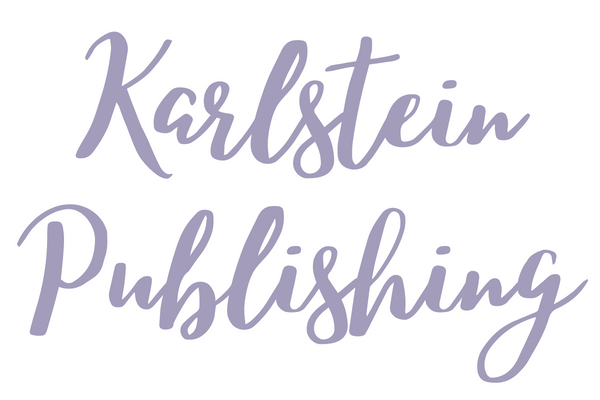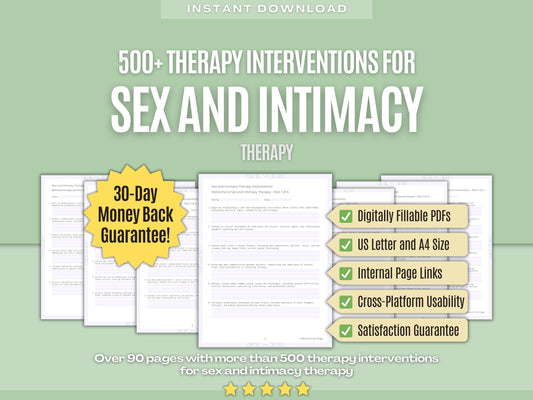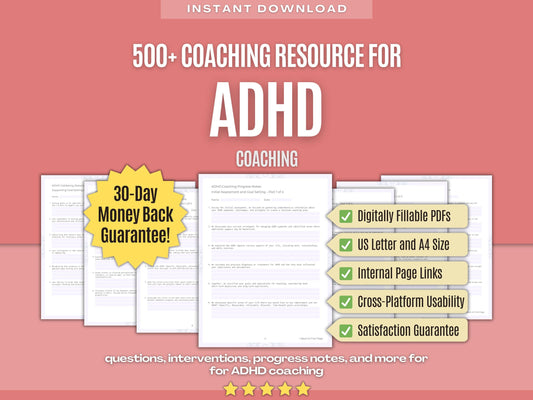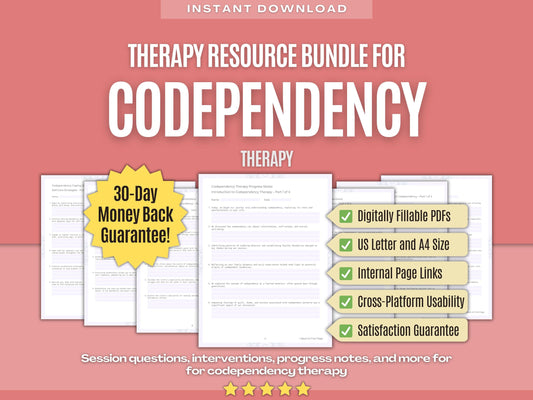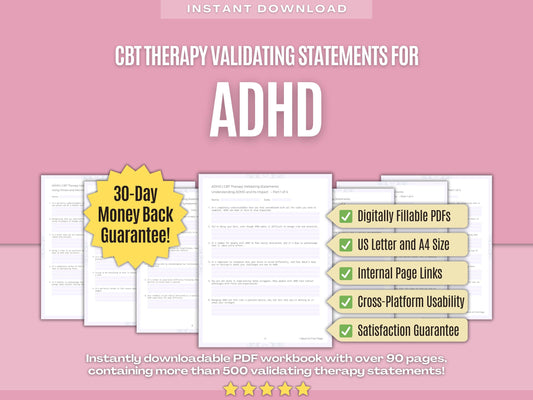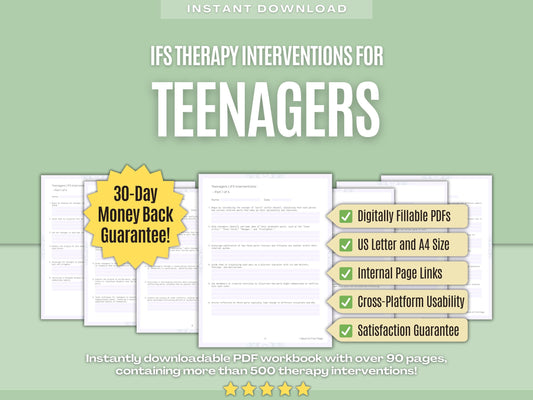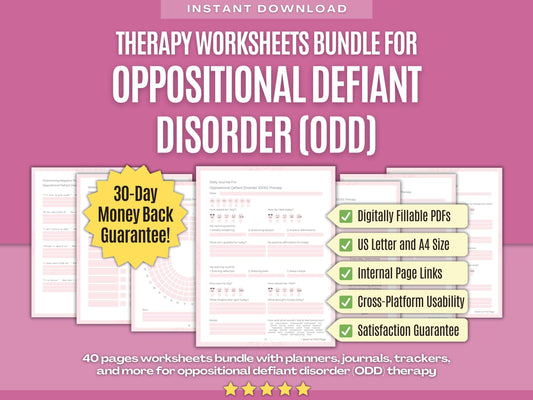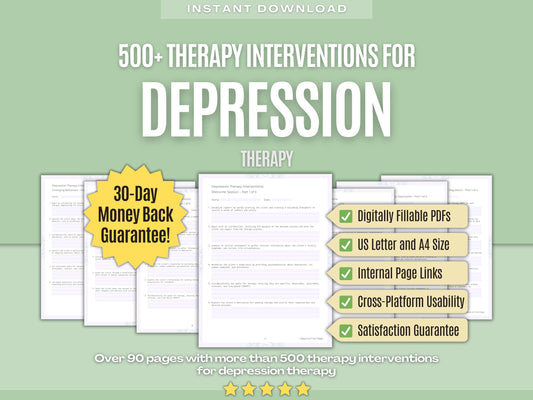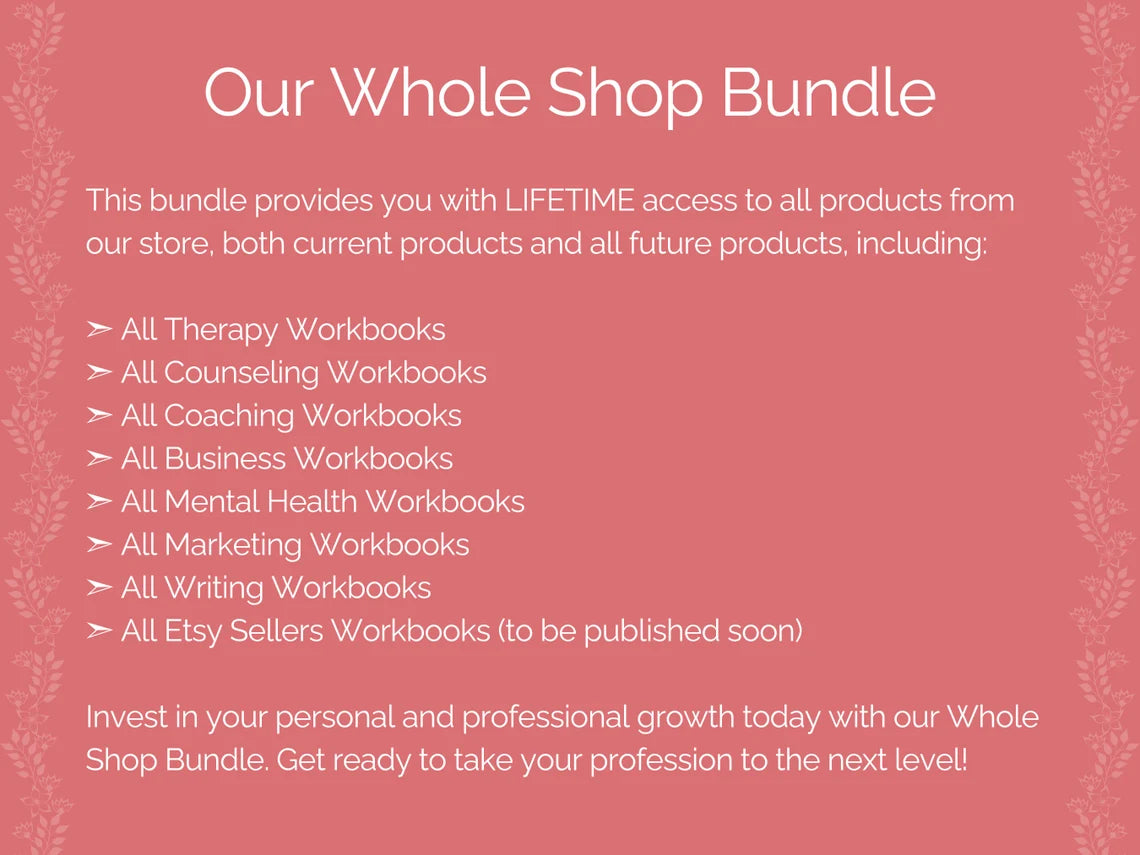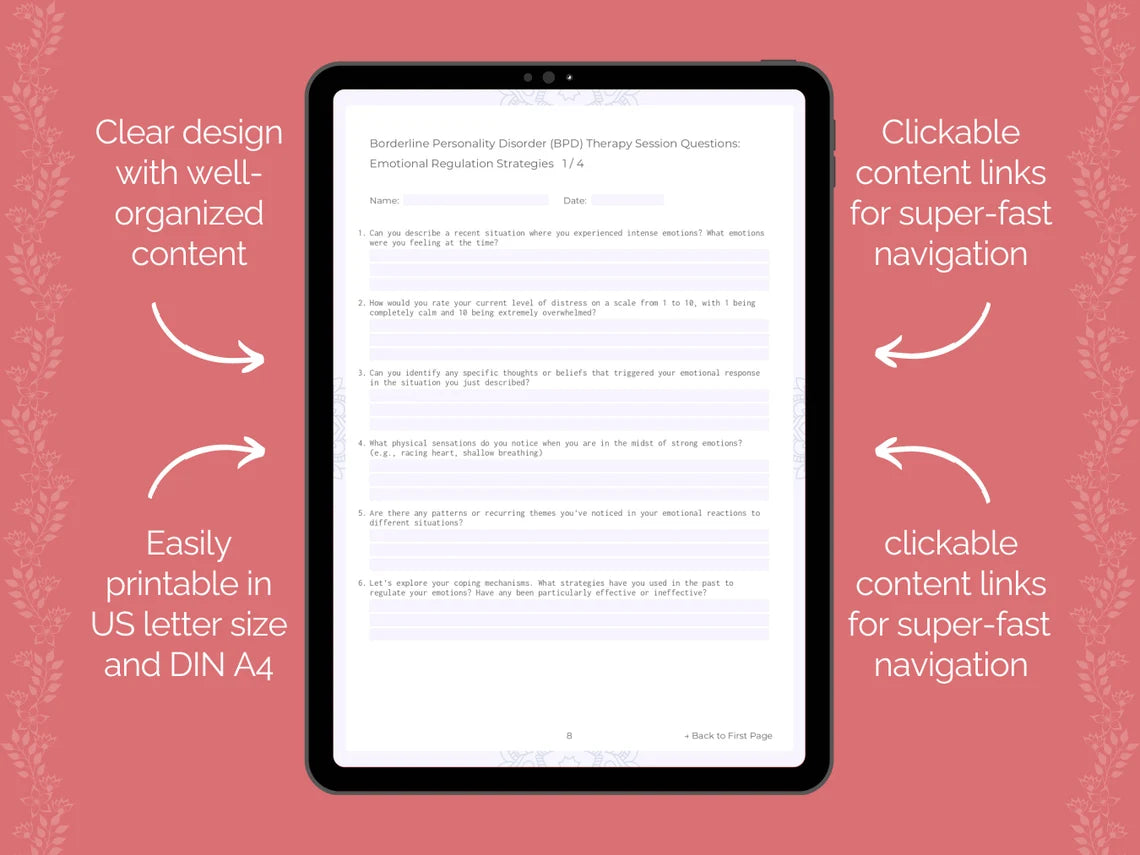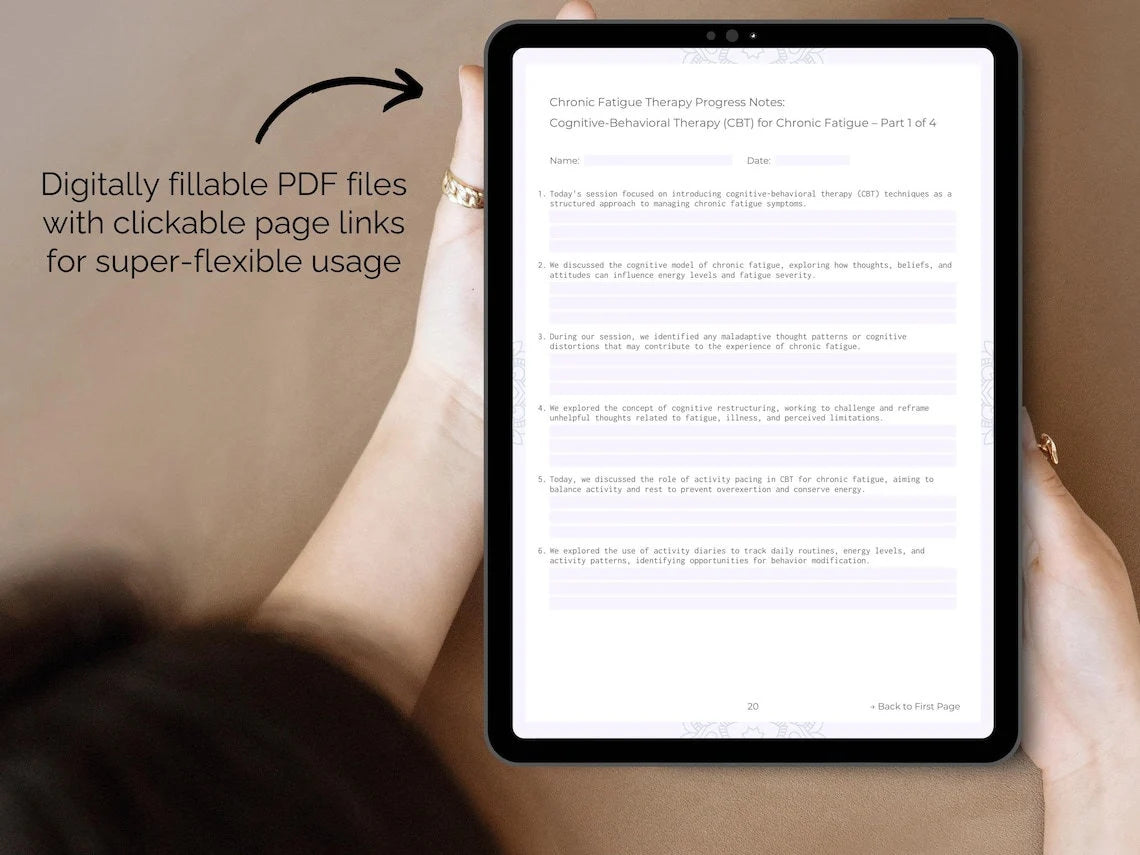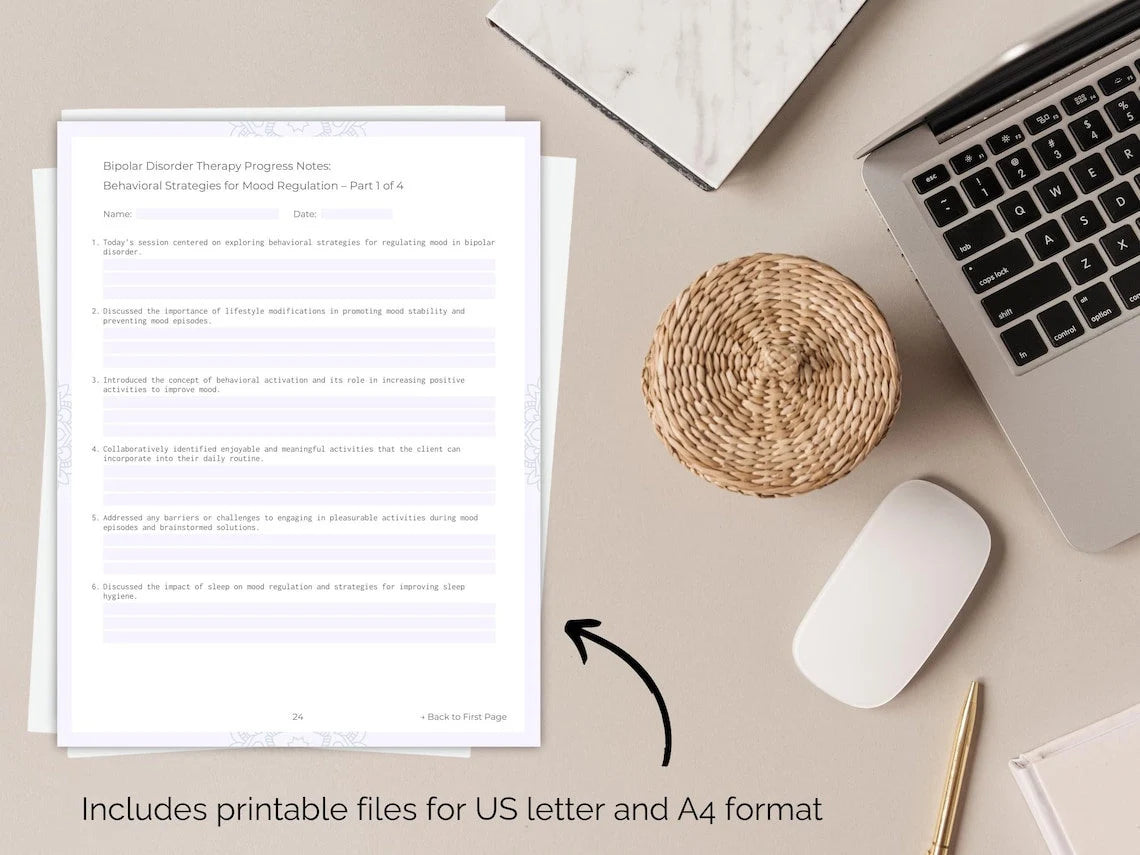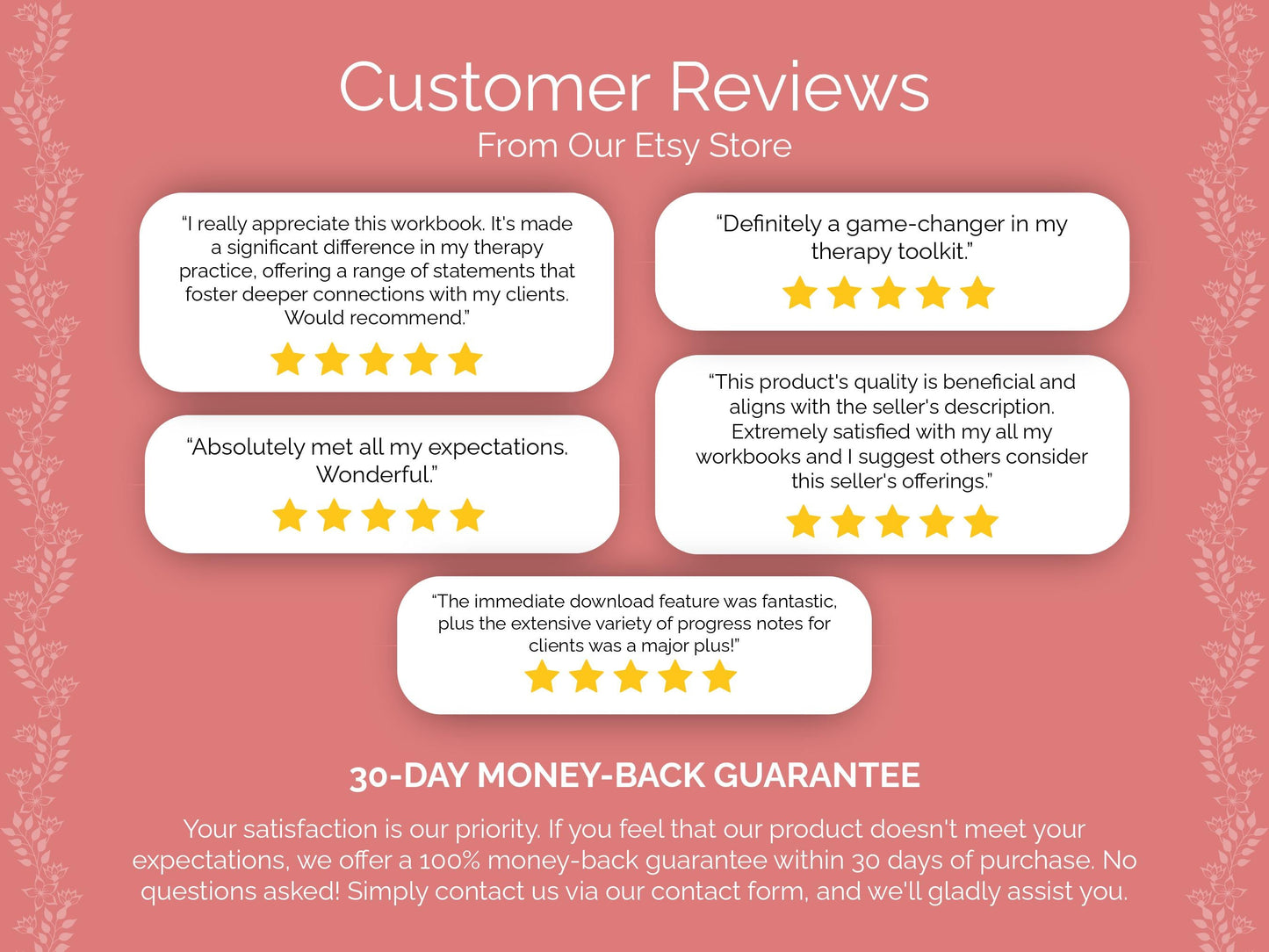Elevate Your Therapy and Guide Your Clients to Inner Healing with Our ADHD Coping Skills! ✨
1. Setting Realistic Goals
- Start Small: Begin by setting goals that are manageable and achievable, considering your current abilities and resources.
- Prioritize Goals: Determine which goals are most important or urgent, focusing your time and energy on those with the highest priority.
- Make Goals Measurable: Establish criteria for evaluating progress and success, enabling you to track your accomplishments and adjust your approach as needed.
- Consider Potential Challenges: Anticipate obstacles or setbacks that may arise while pursuing your goals, and develop strategies for overcoming them.
- Focus on Effort, Not Perfection: Emphasize the effort you put into pursuing your goals rather than striving for perfection, acknowledging that progress is more important than flawlessness.
- Learn from Setbacks: View setbacks as opportunities for learning and growth rather than as indicators of failure, identifying lessons that can inform future efforts.
- Practice Self-Reflection: Regularly reflect on your progress toward goals, identifying strengths, areas for improvement, and adjustments that may be necessary.
- Use Positive Reinforcement: Reward yourself for making progress toward your goals, using incentives that are meaningful and motivating to you.
- Establish Accountability: Share your goals with others who can hold you accountable for your progress, providing support and encouragement along the way.
- Practice Patience: Recognize that progress may be gradual and that achieving meaningful change takes time, patience, and perseverance.
- Develop Coping Strategies: Identify potential challenges or barriers to goal attainment and develop coping strategies to address them effectively.
Need more? Find all 500+ Coping Skills for ADHD Therapy in our Digital Workbook!
2. Organizing Your Space
- Establish a designated workspace: Designate a specific area in your home or workplace where you can focus on tasks and keep important materials organized and easily accessible.
- Use storage solutions: Invest in storage containers, shelves, and organizers to maximize space and keep items neatly stored and categorized, reducing clutter and promoting organization.
- Label items and containers: Use labels or color-coding systems to identify the contents of containers, drawers, or folders, facilitating quick and efficient access to items and reducing confusion.
- Set up a filing system: Implement a filing system for important documents, papers, or digital files, organizing them in folders or binders according to categories or priorities.
- Use reminders and visual cues: Utilize reminders, sticky notes, or visual cues to prompt you to complete tasks, attend appointments, or follow through on organizational routines.
- Minimize distractions: Identify and minimize potential distractions in your environment, such as excessive noise, clutter, or visual stimuli, to create a more conducive space for focus and productivity.
- Streamline your belongings: Evaluate your possessions regularly and consider donating, selling, or discarding items that are no longer needed or used, freeing up space and reducing clutter.
- Create designated zones for specific activities: Divide your space into zones dedicated to specific activities or tasks, such as a workspace for productivity, a relaxation area for downtime, or an exercise area for physical activity.
- Keep frequently used items within reach: Arrange frequently used items within easy reach to minimize the time and effort required to access them, enhancing efficiency and convenience in your space.
- Set realistic goals for organization: Break down larger organizational tasks into smaller, manageable goals, setting realistic timelines and milestones to track your progress and celebrate achievements.
- Practice self-compassion: Be patient and kind with yourself as you work on organizing your space, recognizing that it may take time and effort to develop new habits and routines.
Need more? Find all 500+ Coping Skills for ADHD Therapy in our Digital Workbook!
3. Time Management Strategies
- Prioritize tasks: Identify which tasks are most important or urgent and focus your time and energy on completing them first, before addressing less critical activities.
- Use a planner or calendar: Utilize a planner or digital calendar to schedule appointments, deadlines, and tasks, helping to keep track of commitments and manage time effectively.
- Allocate specific time slots for tasks: Assign dedicated time blocks for different activities or tasks throughout the day, maximizing efficiency and minimizing distractions.
- Practice time blocking: Group similar tasks together and allocate specific time blocks for each category, optimizing productivity and minimizing context switching.
- Limit multitasking: Avoid trying to juggle multiple tasks simultaneously, as it can lead to decreased efficiency, increased errors, and heightened stress levels.
- Delegate tasks when possible: Identify tasks that can be delegated to others and enlist their help, freeing up time and mental energy for tasks that require your attention.
- Break tasks into smaller time increments: Set a timer for short intervals, such as 15 or 30 minutes, and focus on a single task during each interval to maintain concentration and productivity.
- Review and prioritize daily: Take time each morning to review your schedule and prioritize tasks for the day, ensuring alignment with your goals and objectives.
- Use visual cues: Utilize visual reminders or cues, such as sticky notes or color-coding systems, to prompt you to complete tasks or remember important deadlines.
- Set realistic expectations: Be realistic about what you can accomplish within a given timeframe, avoiding overcommitment and setting yourself up for disappointment or burnout.
- Develop problem-solving skills: Learn to identify and address common time management challenges, such as procrastination or indecision, using effective problem-solving techniques.
Need more? Find all 500+ Coping Skills for ADHD Therapy in our Digital Workbook!
4. Building Healthy Routines
- Start with small, manageable steps: Begin by incorporating one or two healthy habits into your daily routine, gradually building upon them over time to create a more comprehensive routine.
- Establish a consistent wake-up time: Set a regular wake-up time each morning to anchor your routine and regulate your body's internal clock, promoting better sleep patterns and overall well-being.
- Schedule regular meals: Plan and prepare balanced meals at consistent times throughout the day to regulate energy levels, support mental clarity, and maintain overall health.
- Create a bedtime routine: Establish a calming bedtime routine to signal to your body that it's time to wind down and prepare for sleep, promoting better sleep quality and overall restfulness.
- Use visual cues and reminders: Utilize visual aids such as calendars, to-do lists, or alarms to help you stay on track with your routine and remember important tasks or appointments.
- Seek support: Build a support network of friends, family members, or a therapist who can offer encouragement, accountability, and practical assistance in building and maintaining healthy routines.
- Focus on consistency: Aim to follow your routine consistently, even on days when motivation is low or unexpected disruptions occur, recognizing that consistency is key to long-term success.
- Celebrate successes: Acknowledge and celebrate your achievements and milestones in building and maintaining healthy routines, reinforcing positive behaviors and motivation.
- Be flexible: Remain open to adapting your routine as needed to accommodate changes in your schedule, preferences, or circumstances, maintaining its relevance and sustainability over time.
- Limit screen time: Set boundaries around the use of electronic devices and screens, especially before bedtime, to promote better sleep quality and reduce potential distractions or disruptions to your routine.
- Gradually increase complexity: As you become more comfortable with your routine, gradually introduce additional habits or activities to further enhance your well-being and productivity.
Need more? Find all 500+ Coping Skills for ADHD Therapy in our Digital Workbook!
5. Exercise for Focus and Calm
- Start with activities you enjoy: Begin by exploring different types of physical activities and exercises to find ones that you enjoy and that resonate with you, whether it's walking, swimming, dancing, yoga, or martial arts.
- Establish a routine: Incorporate regular exercise into your daily or weekly schedule by setting aside dedicated time slots for physical activity, making it a consistent part of your routine.
- Find accountability partners: Exercise with a friend, family member, or workout buddy who can provide support, encouragement, and accountability, making it more enjoyable and easier to stick to your routine.
- Break it into chunks: If longer workouts feel overwhelming, break them into smaller, more manageable chunks throughout the day, such as 10-minute mini workouts or brief activity breaks between tasks.
- Listen to your body: Pay attention to your body's signals and adjust your exercise routine accordingly, taking rest days when needed and modifying activities to accommodate any physical limitations or discomfort.
- Practice mindfulness: Incorporate mindfulness practices such as deep breathing, body scans, or mindful movement into your exercise routine to enhance focus, reduce stress, and increase awareness of your body and surroundings.
- Choose outdoor activities: Take advantage of the benefits of outdoor exercise by engaging in activities such as walking, jogging, cycling, or hiking in natural settings, which can boost mood, reduce stress, and enhance focus and concentration.
- Focus on the present moment: Practice being fully present and engaged in your exercise routine, paying attention to the sensations of movement, breathing, and muscle engagement, rather than getting caught up in distracting thoughts or worries.
- Reward yourself: Provide yourself with positive reinforcement and rewards for sticking to your exercise routine, whether it's treating yourself to a favorite activity, indulging in a healthy snack, or enjoying a relaxing bath after your workout.
- Track your progress: Keep track of your workouts, progress, and achievements using a workout journal, fitness app, or wearable activity tracker, which can help you stay motivated and accountable to your goals.
- Be patient: Be patient with yourself as you work to establish and maintain a regular exercise routine, recognizing that progress takes time and consistency, and that setbacks are a natural part of the process.
Need more? Find all 500+ Coping Skills for ADHD Therapy in our Digital Workbook!
6. Emotional Regulation Skills
- Identify and label emotions: Start by developing awareness of your emotions by identifying and labeling them as they arise, whether it's frustration, anger, sadness, anxiety, or excitement.
- Use grounding techniques: Use grounding techniques such as deep breathing, progressive muscle relaxation, or focusing on sensory experiences (e.g., touch, taste, smell) to anchor yourself in the present moment and regulate overwhelming emotions.
- Express emotions constructively: Find healthy and constructive ways to express your emotions, whether it's through talking to a trusted friend or family member, journaling, creative expression (e.g., art, music), or physical activity (e.g., exercise, dancing).
- Challenge unhelpful thoughts: Challenge unhelpful thoughts or beliefs that may be fueling intense emotions, such as catastrophic thinking, all-or-nothing thinking, or self-criticism, and replace them with more balanced and rational perspectives.
- Set boundaries: Set clear and healthy boundaries with others to protect your emotional well-being and prevent situations or relationships that may trigger or exacerbate intense emotions.
- Practice distress tolerance: Build resilience to intense emotions by practicing distress tolerance skills, such as accepting reality, finding meaning in adversity, and using coping strategies to navigate challenging situations.
- Use positive coping strategies: Use positive coping strategies such as humor, optimism, or gratitude to shift your perspective and mood during times of emotional distress, and foster resilience and well-being.
- Practice assertiveness: Assertively communicate your needs, feelings, and boundaries to others in a respectful and assertive manner, advocating for yourself and addressing conflicts or misunderstandings proactively.
- Use distraction techniques: Distract yourself from intense emotions by engaging in activities that shift your focus and attention away from distressing thoughts or feelings, such as watching a movie, reading a book, or going for a walk.
- Create a self-care routine: Establish a regular self-care routine that includes activities and practices that nourish your physical, mental, and emotional well-being, and prioritize self-care as an essential aspect of managing emotions.
- Practice emotional regulation strategies: Learn and practice specific emotional regulation strategies such as identifying triggers, implementing coping strategies, and using problem-solving skills to manage intense emotions effectively.
Need more? Find all 500+ Coping Skills for ADHD Therapy in our Digital Workbook!
7. Communication Skills for Relationships
- Active listening: Practice active listening by giving your full attention to the speaker, maintaining eye contact, and paraphrasing or summarizing their message to ensure understanding and demonstrate empathy and respect.
- Practice empathy: Cultivate empathy by putting yourself in the other person's shoes and trying to understand their perspective, feelings, and needs, validating their experiences and demonstrating compassion and understanding.
- Be non-judgmental: Be non-judgmental and open-minded in communication, accepting differences and diverse perspectives without prejudice or criticism, fostering mutual respect and understanding in relationships.
- Practice assertiveness: Develop assertiveness skills to express your needs, preferences, and boundaries confidently and respectfully, advocating for yourself while also considering the needs and perspectives of others.
- Practice conflict resolution: Develop conflict resolution skills to address disagreements or conflicts constructively, focusing on finding mutually acceptable solutions and maintaining the integrity of the relationship.
- Practice active engagement: Engage actively in conversations by asking open-ended questions, seeking clarification, and showing genuine interest in the other person's thoughts, feelings, and experiences.
- Practice flexibility: Be flexible and adaptable in communication, adjusting your approach and style to accommodate the preferences, needs, and communication styles of the other person, promoting effective and harmonious interactions.
- Practice active problem-solving: Engage in active problem-solving and collaborative decision-making in relationships, working together to address challenges or issues constructively and find mutually satisfying resolutions.
- Practice validation: Validate the other person's experiences and emotions by acknowledging their feelings and perspectives as valid and understandable, even if you may not share the same views or opinions.
- Practice negotiation: Develop negotiation skills to navigate differences and conflicts in relationships, finding compromise and common ground through respectful and collaborative communication and problem-solving.
- Practice tolerance: Practice tolerance and acceptance of differences in communication, recognizing that everyone has their own unique communication style, preferences, and needs, and adapting accordingly to foster understanding and harmony.
Need more? Find all 500+ Coping Skills for ADHD Therapy in our Digital Workbook!
8. Building and Maintaining Motivation
- Set meaningful goals: Set goals that are personally meaningful, relevant, and achievable, aligning with your values, interests, and aspirations to increase motivation and commitment to taking action.
- Use positive reinforcement: Reinforce progress and achievements through self-praise, rewards, or acknowledgment, celebrating successes to maintain motivation and momentum in pursuing goals.
- Cultivate self-compassion: Cultivate self-compassion and kindness towards yourself, recognizing that setbacks and challenges are a natural part of the process, and offering yourself encouragement and support.
- Use affirmations: Use positive affirmations or self-talk to challenge self-doubt and negativity, affirming your abilities, strengths, and potential to succeed in reaching your goals.
- Create a supportive environment: Surround yourself with people, resources, and environments that support your goals and aspirations, fostering encouragement, inspiration, and accountability in your pursuit of success.
- Focus on progress, not perfection: Shift your focus from achieving perfection to making progress, embracing imperfection and learning from setbacks as valuable opportunities for growth and development.
- Practice time management: Manage your time effectively by prioritizing tasks, setting deadlines, and allocating time for working towards your goals, maximizing productivity and progress.
- Stay connected to your why: Stay connected to your underlying reasons and motivations for pursuing your goals, reminding yourself of the significance and meaning behind your efforts to stay motivated and committed.
- Use accountability partners: Partner with friends, family members, or peers who can provide support, encouragement, and accountability in pursuing your goals, sharing progress and challenges openly and honestly.
- Use positive self-talk: Use positive and affirming self-talk to challenge self-doubt and negativity, replacing unhelpful thoughts with encouraging and supportive messages to boost confidence and motivation.
- Reflect on past successes: Reflect on past successes and achievements, drawing inspiration and confidence from your ability to overcome challenges and reach goals in the past.
Need more? Find all 500+ Coping Skills for ADHD Therapy in our Digital Workbook!
9. Leveraging Technology for ADHD Management
- Utilize task management apps: Use task management apps or software to organize tasks, set reminders, and prioritize activities, helping to structure your day and manage time more effectively.
- Use productivity tools: Explore productivity tools such as time tracking apps, focus timers, or website blockers to enhance focus and productivity, minimizing distractions and increasing efficiency.
- Implement digital note-taking: Implement digital note-taking tools or apps to capture ideas, jot down important information, and organize thoughts and resources in a digital format for easy access and retrieval.
- Use digital organization systems: Use digital organization systems such as cloud storage, file management apps, or electronic document scanners to keep important documents, files, and information organized and accessible from anywhere.
- Explore habit-tracking apps: Explore habit-tracking apps or habit-building platforms to establish and monitor daily routines, habits, or goals, providing accountability and motivation for behavior change and self-improvement.
- Set up digital routines: Establish digital routines or workflows for common tasks or activities, such as email management, meal planning, or exercise routines, streamlining processes and reducing decision fatigue.
- Explore medication reminder apps: Explore medication reminder apps or pill organizer apps to help manage medication schedules, dosages, and refills, ensuring adherence to prescribed treatment plans.
- Set up digital to-do lists: Set up digital to-do lists or task boards to track and prioritize tasks, breaking down larger projects into smaller, actionable steps for easier management and completion.
- Use digital journals or mood tracking apps: Use digital journals or mood tracking apps to record thoughts, feelings, and experiences, monitoring mood fluctuations and identifying patterns or triggers for emotional dysregulation.
- Explore virtual support groups: Explore virtual support groups or online communities for individuals with ADHD, connecting with peers, sharing experiences, and learning from others' coping strategies and insights.
- Set up digital meal planners: Set up digital meal planning apps or platforms to organize recipes, plan meals, and create grocery lists, promoting healthy eating habits and reducing decision fatigue around meal preparation.
Need more? Find all 500+ Coping Skills for ADHD Therapy in our Digital Workbook!
10. Planning for Success and Setting Future Goals
- Break goals into manageable steps: Break down larger long-term goals into smaller, more manageable steps or milestones, making progress feel achievable and providing a clear roadmap for success.
- Prioritize goals: Prioritize your goals based on their importance, relevance, and urgency, focusing your time and energy on the goals that align with your values and aspirations.
- Break tasks into smaller steps: Break down the tasks required to achieve each goal into smaller, more manageable steps, making them easier to tackle and reducing overwhelm.
- Seek feedback: Seek feedback from trusted individuals such as mentors, peers, or professionals on your goals and plans, gaining valuable insights and perspectives to refine and improve your approach.
- Visualize success: Visualize yourself achieving your goals and experiencing the outcomes you desire, harnessing the power of visualization to increase motivation and commitment to taking action.
- Manage setbacks: Anticipate and plan for setbacks or obstacles that may arise on your path to achieving your goals, developing resilience and coping strategies to overcome challenges and stay motivated.
- Reflect on your values: Reflect on your values, passions, and long-term aspirations to ensure that your goals align with what truly matters to you, fostering a sense of purpose and fulfillment in your pursuit of success.
- Stay organized: Stay organized by keeping track of your goals, plans, and progress using tools such as planners, calendars, or goal-tracking apps, maintaining clarity and focus in your pursuit of success.
- Review and adjust regularly: Regularly review your goals and progress, evaluating what is working well and what may need adjustment, and making necessary changes to stay on course towards success.
- Cultivate self-discipline: Cultivate self-discipline by setting routines, establishing habits, and holding yourself accountable to your goals and plans, even when faced with distractions or temptations.
- Practice self-care: Prioritize self-care activities such as rest, relaxation, exercise, and hobbies to maintain physical and mental well-being, ensuring you have the energy and resilience to pursue your goals effectively.
We hope that our coping skills for ADHD therapy will help you to elevate your therapy practice and guide your clients to inner healing! Do you need more coping skills for ADHD therapy? Find them all in our Digital Workbook! Or do you have any questions or suggestions for us? Please feel free to contact us at any time!
